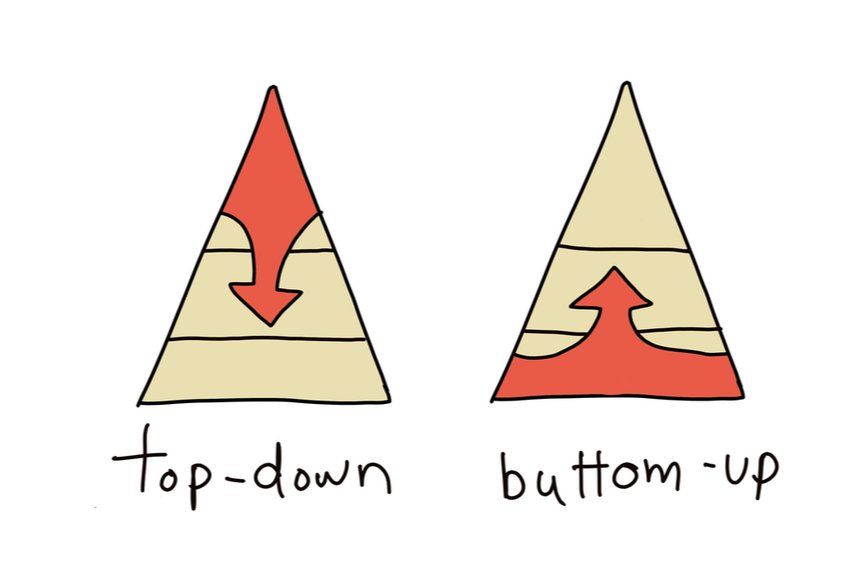15 Time Management Techniques

Time is a fixed asset—there’s only so much of it and finding time to do everything on your to-do list can be challenging. If you use it wisely, you can get the most out of life, both personally and professionally, and achieve your goals. Time management is planning your time and following through with your plan to increase productivity and leave enough time to enjoy your life. In this article, we’ll explore 15 time management techniques that can help you plan and execute effective time use.
Key Takeaways
- Time management techniques improve efficiency and productivity.
- The best time management techniques help improve your personal life and increase fulfillment.
- Some time management techniques are concept-based, while others are action-driven.
- Combine techniques to find the best system for your needs.
Table of Contents
- Pomodoro Technique
- Eisenhower Matrix
- Eat That Frog
- Kanban Technique
- Parkinson’s Law
- SMART Method
- Rapid Planning Method or RPM
- Pareto Analysis
- Pickle Jar Theory
- POSEC Method
- Getting Things Done (GTD) Method
- Time Blocking Method
- 1-3-5 Rule
- ABCDE Method
- Biological Prime Time
- Conclusion
1. Pomodoro Technique
Pomodoro is a time management method that uses blocks of time and set breaks to maximize efficiency and incorporate information assimilation. With the Pomodoro technique, you use a timer to set 25-minute stretches of focused work and 5 to 10-minute breaks. After four consecutive focused intervals, you take a longer break, typically 15 to 30 minutes.
Developed by a student while studying, the Pomodoro technique focuses the brain on a specific topic and then gives it a moment to absorb the content. It also reduces the effect of interruptions on focus and flow. Once a focus stretch begins, you do not stop until the timer rings.
The Pomodoro method includes follow-up steps. If there is any remaining time after completing your task, review your work from a learning point of view. Then, review your list of upcoming tasks and update them as necessary.
The Pomodoro technique is best suited to students because it has the advantage of allowing time for information assimilation.

2. Eisenhower Matrix
Also known as the Eisenhower Principle or Eisenhower Method, this technique improves time management skills by prioritizing important tasks. It utilizes a quadrant system to categorize tasks by importance and urgency. The quadrants are known as the Eisenhower Decision Matrix or Eisenhower Box. They are the core of this time management strategy.
To begin, evaluate your list of specific tasks, assigning each to a quadrant:
- Important and urgent tasks
- Important but not urgent
- Unimportant and urgent
- Unimportant and not urgent
Once you have assigned all your tasks, work on the items in box one first. Those are urgent tasks that require your personal attention. They are things like crises and deadlines.
Next, assign an end date to box 2, important tasks but not urgent. These are things like exercise, relationships, and planning.
Box 3 tasks, unimportant urgent tasks like meetings, are delegated. Box 4 tasks are dropped. These are pleasant activities and time wasters.
The Eisenhower Matrix management strategy is best utilized by highly driven people with staff. If you have no one to delegate to, box 3 becomes problematic.
3. Eat That Frog
Eat That Frog is a book title and idea by Brian Tracy, a motivational speaker. It’s not so much a time management technique as it is a concept. Time management skills often develop by turning visualization into action.
When faced with a list of things to do, start with the big, difficult, and important tasks. It is similar to what Desmon Tutu said: “There is only one way to eat an elephant: a bite at a time.”
The Eat That Frog time management strategy is good for procrastinators. It encourages you to not let the weight of the work stop you from starting.
4. Kanban Technique
The Kanban Technique was developed during the 1980s by an industrial engineer at a car company. Its purpose is to improve manufacturing efficiency. It focuses on reducing waste rather than prioritizing tasks.
To implement the Kanban technique, you’ll first measure the lead time and cycle time of production and process steps to identify problem areas. Establish upper limits on processing and reduce those limits as inefficiencies are identified and removed.
The goal is to limit the buildup of excess inventory. A Kanban card matches every step of the process. The cards essentially make up a flow chart.
Kanban is a common technique in digital production platforms like Notion and Trello. As a business time management technique, the Kanban system helps project managers address bottlenecks in production. The system allows managers to accurately determine timelines to meet stakeholder expectations. It is particularly helpful in identifying overstaffed and short-staffed sectors.
5. Parkinson’s Law
Parkinson’s Law is another concept and less of a technique. It’s the observation that the length of time to complete a task will expand to fill its allotted time. It originally referred to the action or inaction of bureaucracy and public administration. On any given day, regardless of the amount of work, it would take the full day to complete the tasks.
The idea with the Parkinson’s Law time management concept is that if you set yourself 4 hours to complete a 1-hour task, it will take 4 hours. When you apply this observation to time management, it is unwise to give yourself more time than you need because you will take all that time to complete it rather than work quickly and efficiently to finish early.
6. SMART Method
The time management technique SMART is an acronym for specific, measurable, achievable, relevant, and time-bound. This method applies to goal setting but not to goal achievement. The idea is that by having clear, meaningful, and attainable goals, you feel motivated and focused enough to complete the tasks on your goals list. Here’s the breakdown for setting SMART goals:
S: Specific items are simple, significant, and well-defined, like getting dressed, arriving on time, and arriving prepared.
M: Measurable tasks are meaningful and motivating. They make you feel like you have accomplished something as you can measure if you’ve achieved them or not. Folding laundry, writing a cover letter, buying a gift are examples of measurable goals.
A: Achievable tasks are attainable and things all parties have agreed to. Don’t add it to the list if you are waiting for more information or a completed contract.
R: Relevant tasks are resourced, realistic, and results-based. They help in the completion of tasks pertaining to a specific project.
T: Time-bound tasks have a time limit or time/cost limit. These are time-sensitive important tasks like bill payments or addressing work contracts that require completion before payment.
If something doesn’t meet these criteria, don’t add it to your goals list yet. In this way, you set actionable, achievable goals that lead to success and improve your time management skills.
7. Rapid Planning Method or RPM
The Rapid Planning Method is another system of thinking rather than a time management process. It was developed by motivational speaker Tony Robbins. It is a first step towards improving your time management skills.
In RPM, you think through the process and individual steps you’ll perform to achieve a particular outcome. It is a thinking method, not a doing method. It’s based on the idea that what you focus on grows. If you focus on anger, failure, and frustration, that will be the sum of your life.
The method has you first focus on Results-oriented ideas and goals (R). Next, move on to Purpose-driven (P) items. Finally, consider your Massive action plan (M). Always use the RPM method in that order.
The RPM time management technique is best for people working through negative thinking habits and life stagnation.
8. Pareto Analysis
Pareto analysis is a production efficiency technique and a decision-making tool. It is based on an 80/20 model—80% of the benefit is achieved with 20% work, or 80% of the problems are traced to 20% of the causes.
To apply the Pareto Analysis time management technique, identify and prioritize tasks, clients and team members. What are the goals and/or problems, and which is your top priority. Assess completing problems and measure the benefits of fixing them.
Next, organize your workload more effectively. This analysis can help you improve productivity and profitability.
Apply this to a business like financial consulting, where, in most cases, 20% of clients account for 80% of your income. If a client that accounts for less income requires most of your time, you downgrade their priority.
9. Pickle Jar Theory
The Pickle Jar theory stems from a physics concept about volume. The jar represents a fixed amount. It could be your time, your energy, or your finances.
First, you put in the big rocks, items that are high priority and important. Then, you add pebbles to the jar, tasks that are lower priority and not as urgent. Next, add sand to represent the less important tasks and sources of distraction. Finally, you add water to represent your private life.
All of these items are important and make up the total of things needed to live a fulfilled life that includes work life balance. The trick is adding them in a specific order. If you add the sand first, you have less room for the rocks and pebbles, even though the amount hasn’t changed.
10. POSEC Method
The time management technique POSEC is another acronym:
P: Prioritize
O: Organize
S: Streamline
E: Economize
C: Contribute
The POSEC Method draws on the 1-3-5 method, Eisenhower’s Matrix, and Maslow’s hierarchy of needs. The idea is that fulfillment should always be the main goal and time management strategies can include your personal life.
Start prioritizing by writing down a to-do list and include small tasks like getting dressed and big tasks like finishing your project. No task is too small for the list. Then, prioritize them from important/urgent to not important/urgent.
Next, organize them into achievable sections with a major task broken into smaller tasks. Move on to streamlining. Delegate tasks to a family member or professional, like housework or detailing your car. To economize your list, create a schedule. Assign time slots to each task.
Finally, contribute. Complete the tasks that bring you joy and support the people around you.
The POSEC time management method aligns with people who want to achieve a work-life balance and have the support to apply the technique.
11. Getting Things Done (GTD) Method
Getting Things Done was developed by David Allen, a productivity consultant. Similar to the idea that what you focus on grows, the Getting Things Done time management system encourages free thinking as a method of drawing out what matters most.
Start by acknowledging and capturing anything that catches your attention. Then, clarify those ideas. What do they mean, and are they actionable steps?
Move on to the third step, which is organizing. Give items priority based on importance and fulfillment.
Next, review what you’ve done so far, and update or revise your lists frequently.
Finally, engage in the work.
The Getting Things Done time management method is a fluid work in progress that leaves the opportunity for a change in direction. It is helpful in the creative process like writing and designing, where elements and their importance might shift or become irrelevant.
12. Time Blocking Method
The time management technique Time Blocking, or time chunking, is at the core of most time management methods. Like other time effective time management strategies, it starts with a to-do list. Next, assign specific tasks to segments or blocks of time, prioritizing tasks by importance.
The purpose is to eliminate distractions and discourage multitasking. In time blocking, one task is the only focus for one chunk of time. Many time management strategies utilize time blocking to complete a to-do list.
13. 1-3-5 Rule
With the 1–3–5 rule of time management, you increase your efficiency through project focus and regular breaks. Start by choosing one major task from your to-do list and dividing it into three tasks, then divide each of those into five small tasks. Work on the most important, high-priority task for 1 hour, take a short 10-15 minute break, then work on the medium-priority task related to the first task for 1.5 hours. Take another break and complete the smaller, related tasks. The 1-3-5 Rule improves your time management skills and allows for information assimilation.
The major task could be writing a scope of work (SOW) for a new project. The medium-priority tasks could be sourcing pricing for the project and the smaller tasks could be making phone calls and consulting with the potential team members for project feedback. The next day, you would apply the information you gathered during sections (3) and (5) to the major task—the SOW.
This method is useful for project managers and collaborative work.
14. ABCDE Method
The ABCDE method of time management applies a grading system to your task list. First, you write a to-do list, then assign a letter to each task. A is very important, and E is the least important. Cluster your A tasks together, your B tasks together, and move down the alphabet.
Finally, work through the tasks in order of importance. The ABCDE strategy improves your time management skills by helping to prioritize different tasks in a daily schedule to better manage time.
15. Biological Prime Time
The Biological Prime Time (BPT) method of time management utilizes biology and personality type to maximize efficiency. First, identify the type of person you are—a morning person or a night owl. Ask yourself when you feel most active, when you like to wake up, how much sleep you need to be productive, and what time of day you feel tired.
Once you identify your most productive times, schedule yourself accordingly. The BPT method is particularly useful for student and class selection. It can help improve time management skills by identifying your most productive times.
What Are Time Management Strategies?
Time management strategies are plans to help you achieve your goals. They combine specific techniques, like Pomodoro, which uses a timer and set breaks. The timer and set breaks are strategies to keep you focused and help you avoid distractions, multitasking, and mental burnout.
Boost your productivity with various time management strategies like planning, delegating, prioritizing, and minimizing distractions. Learn more about effective time management strategies.

Conclusion
These effective methods each have something different to offer. The use of time management techniques greatly improves your productivity and efficiency. Choose what works best for you to organize your day and individual tasks. The end result allows you to have more time for the things that fulfill you and give your life purpose.
To further optimize this efficiency, consider using FreshBooks time tracking software. With FreshBooks, you can manage projects and accurately track billable hours. This streamlines your billing process and improves overall productivity by providing valuable data for analysis.
About the author
Sandra Habiger is a Chartered Professional Accountant with a Bachelor’s Degree in Business Administration from the University of Washington. Sandra’s areas of focus include advising real estate agents, brokers, and investors. She supports small businesses in growing to their first six figures and beyond. Alongside her accounting practice, Sandra is a Money and Life Coach for women in business.
RELATED ARTICLES


 How to Make a Gantt Chart in Excel: A Step By Step Guide
How to Make a Gantt Chart in Excel: A Step By Step Guide What Is Order Management? A Complete Guide
What Is Order Management? A Complete Guide How to Write a Business Plan Cover Page: 5 Essential Tips
How to Write a Business Plan Cover Page: 5 Essential Tips What Is Teamwork & Why Is It Important? (3 Reasons & Examples)
What Is Teamwork & Why Is It Important? (3 Reasons & Examples) Bottom-Up vs Top-Down Approach: What’s the Difference?
Bottom-Up vs Top-Down Approach: What’s the Difference?